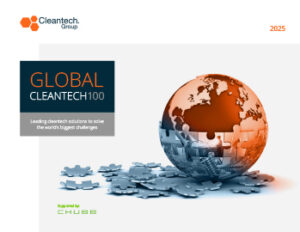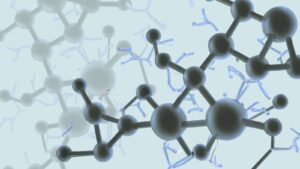2024 Trend Watch: The Innovators Behind Progress
In the first part of this analysis, we discussed the nuances of cleantech innovation growth in 2023 – fewer venture dollars invested, but in greater amounts than pre-pandemic, and with some clear tie-backs to landmark policy measures.
Perhaps the most notable development in 2023 cleantech news was the Inflation Reduction Act’s (IRA) emergence as a pivotal driver of clean energy and cleantech innovation in the U.S. A little over a year since it was passed, the IRA has played a significant role in de-risking private sector investments in clean energy.
In 2023, many U.S.-based Energy & Power innovators were able to sidestep macroeconomic doldrums by engaging more debt and project financing, continuing growth while avoiding pursuit of thinner and more risk-averse venture capital dollars. Despite an overall drop in U.S. venture capital deployed to cleantech innovators in 2023, our analysis of venture-backed U.S. Energy & Power companies identified that the majority of financing occurred outside of equity rounds.
Yesterday’s strongest U.S. Energy & Power venture plays have gone straight from stretching their legs to running at full speed, preparing to now compete in the world of real projects and scale manufacturing.
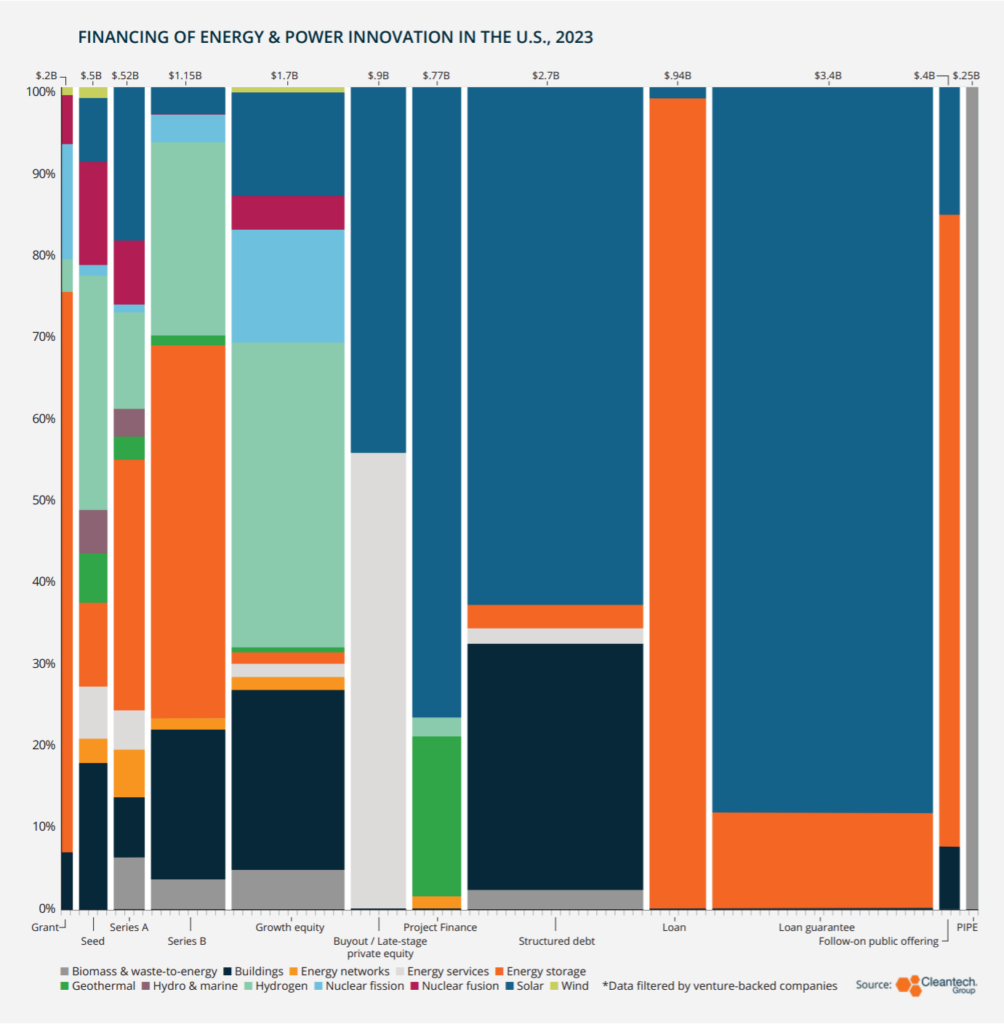
Forward strides in the U.S. solar industry have been well documented, with over $100B in investments clocked and an estimated 20,000 manufacturing jobs created. It is no surprise then, that the majority of U.S. project finance, debt, and loan guarantees to venture-backed Energy & Power companies occurred in solar.
Technologies to decarbonize buildings have picked up momentum in the wake of the IRA – take heating and cooling retrofit innovator, Blocpower. In 2023, the company raised a $154M ($24M equity + $130M debt) round to accelerate development of its proprietary BlocMaps software that will slash costs and speed roll-out of the company’s building electrification and sealing solutions.
The Coming Fight for the Factory Floor
In recent years, cleantech innovation has witnessed a notable shift towards sustainability in heavy industries and commodities production. Two predominant trends have emerged in manufacturing-related cleantech: the competition for control over critical materials supply chains and the drive to decarbonize industrial heat processes. Legislation like the IRA and Net Zero Industry Act (NZIA) have accelerated the development of new technologies and the localization of supply chains, resulting in advancements in materials extraction, refining, and production.
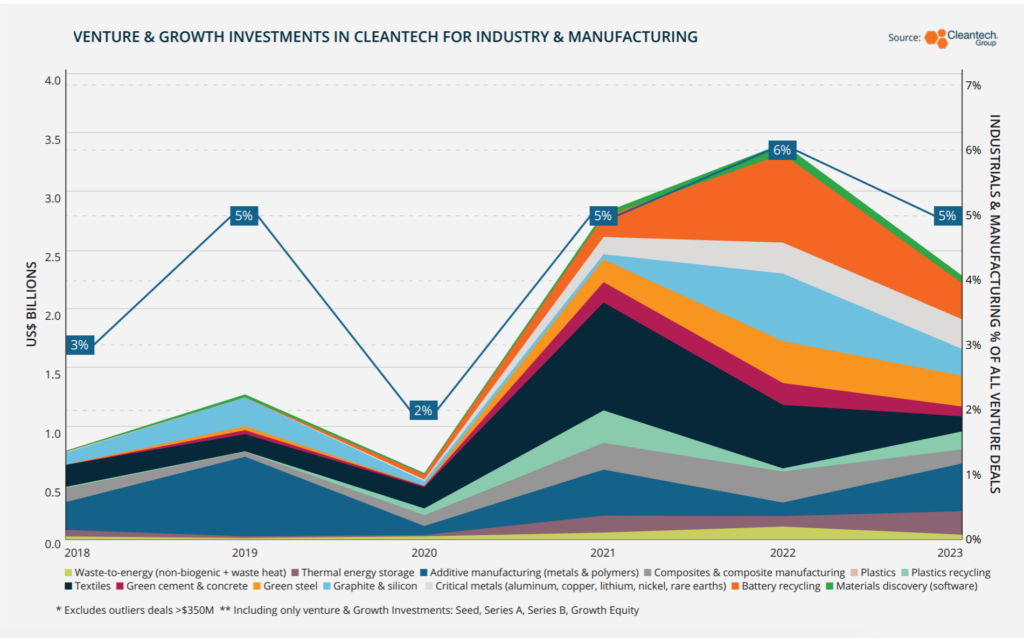
The race to secure critical materials essential for EV battery production and recycling is evident in this year’s Global Cleantech 100 list:
- Direct lithium extraction: Adsorption to selectively capture lithium with sorbents and re-inject impurities (2024 Global Cleantech 100 company Summit Nanotech) and ion-exchange to remove the need for evaporation ponds (2021-2024 Global Cleantech 100 company Lilac Solutions).
- Advanced material refining: Electrochemical refining of lithium, post-extraction (2023-2024 Global Cleantech 100 company Mangrove Lithium) and non-aqueous solutions to extract copper and platinum group metals from ores and waste materials (2024 Global Cleantech 100 company Ph7 Technologies).
- Advanced critical materials recovery: Microwave plasma technology (2023-2024 Global Cleantech 100 company 6K Energy) and electrochemical processing (2024 Global Cleantech 100 company nth Cycle) that aim to advance efficiency of materials recovery beyond today’s hydrometallurgical and pyrometallurgical processes.
Heavy manufacturing and commodities production, long a question mark in net-zero discussions, are poised to benefit from a series of innovations that promise to reduce either the heat usage in production processes or inject non-fossil fuel heat that flattens emissions profiles.
- Electrochemical processing aims to produce heavy materials with an electrolysis process at low or ambient temperatures – Global Cleantech 100 companies Boston Metal (steel through molten oxide electrolysis) and Sublime Systems (cement through electrolytic lime production) are pioneering these techniques.
- In cement, there is an additional challenge of removing the point-source CO2 emissions when converting limestone to lime. Global Cleantech 100 companies Brimstone and Sublime Systems are leveraging non-carbonate rocks in their process to flatten the direct emissions risk.
- Novel approaches to thermal energy storage allow for stored temperatures high enough to generate power or directly heat processes using abundant materials – see Global Cleantech 100 companies Rondo Energy (perforated bricks) and Kraft Block (upcycled steel slag).
- Global Cleantech 100 company QPinch has developed a chemical heat pump to convert industrial waste heat back into process heat, hollowing out OPEX by replacing energy inputs, with applications in Chemicals and Food & Beverage production.
Hardware is Still Hard, but AI Can Improve Hardware Economics
As we noted in our 2023 Cleantech 50 to Watch, a changing dynamic has been the embrace of “deep tech” cleantech innovation by both corporates and investors.
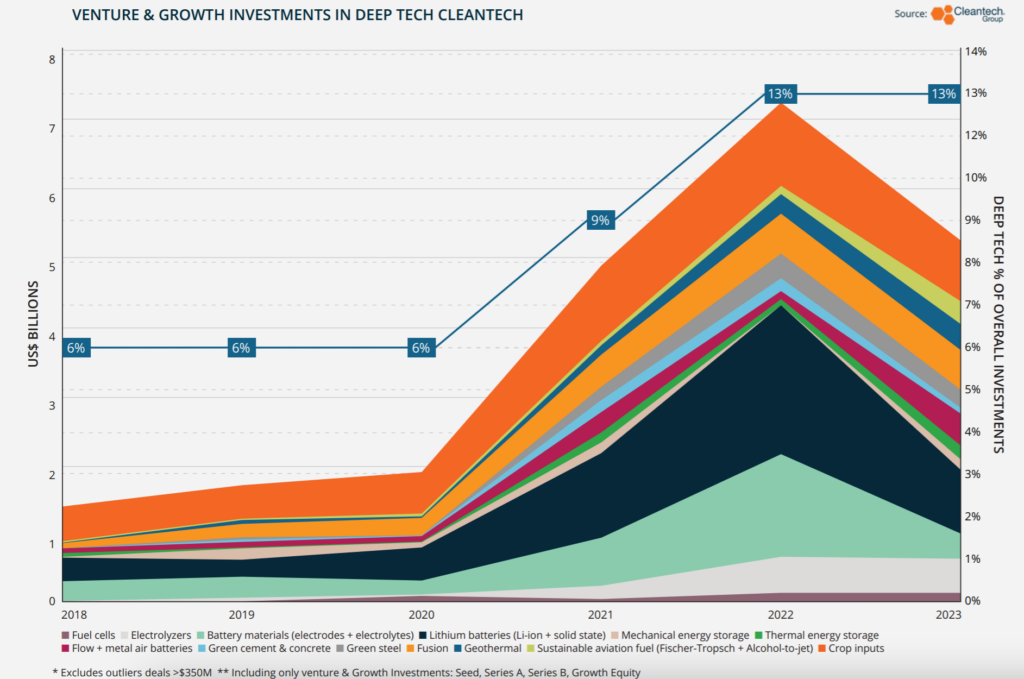
The acceleration of AI applied in cleantech fields is not siloed from hardware development. As evident by many of the companies awarded the 2024 Global Cleantech 100 honor, the days of a software vs. hardware trade-off are fading into the rear-view mirror as AI is increasingly layered into the hardware R&D processes or onto hardware products (or both). We see this dynamic picking up across the board:
- Battery assessment at all stages: Global Cleantech 100 companies Liminal (ultrasound sensing for production quality assessment) and Accure (real-time battery performance analytics) are flattening the safety and failure risks of lithium-ion batteries.
- 2024 Global Cleantech 100 company Relectrify has replaced the busbars and battery management system with an on-battery circuit board and software to manage down to the cell, and bypass failing or dangerous cells.
- Waste identification and sorting: 2024 Global Cleantech 100 company Grey Parrot is using computer vision and analytics to assess financial value, food value, and brand types in waste streams. 2020-2024 Global Cleantech 100 company, AMP Robotics is using computer vision to identify, sort, and even de-package waste.
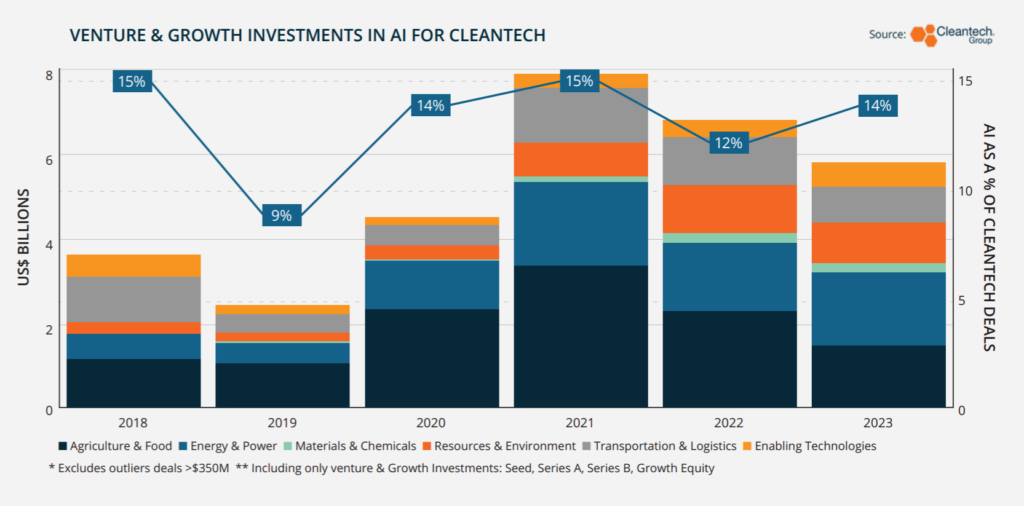
A prime illustration of the growing convergence between the physical and digital realms can be found in the built environment theme:
- BlocPower, mentioned earlier, is leveraging data analytics to compress the “soft costs” of scoping, prospecting, and quoting for building upgrades.
- 2024 Global Cleantech 100 company Infinitum has re-engineered variable frequency drive electric motors for HVAC systems – the Infinitum smart motor system is enhanced by software that allows for granular control and preference-setting.
- Solutions like 2024 Global Cleantech 100 company Deepki that transform building performance data into ESG insights are likely to stimulate a pull-through effect for better HVAC hardware, as stakeholders gain more visibility into real estate operations.
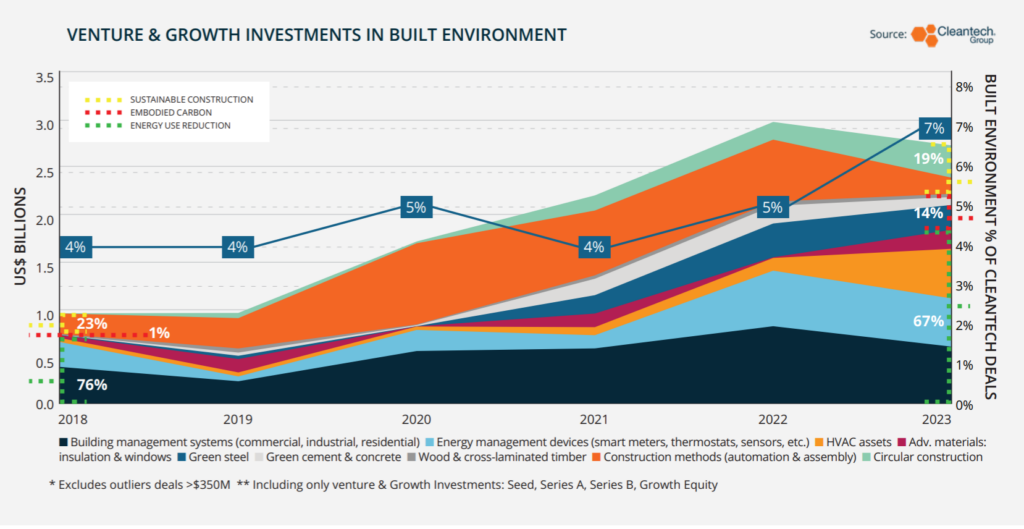
The Next Normal
In 2023, we anticipated a “new normal” marked by leaner fundraising and cautious corporate spending on technology. As we look ahead to 2024, we foresee a transition to the “next normal,” where innovations will face mainstream success or failure. This year will witness the emergence of measurable manufacturing statistics and product pricing for areas we’ve tracked through venture investments for nearly a decade. For those combatting climate change, the remainder of the decade is a pivotal battle, with the markets of the 2030s as the ultimate reward.
We extend our congratulations to the Global Cleantech 100 companies and look forward to an exciting 2024.
Richard Youngman, CEO of Cleantech Group, shares his insights and predictions for 2024.
